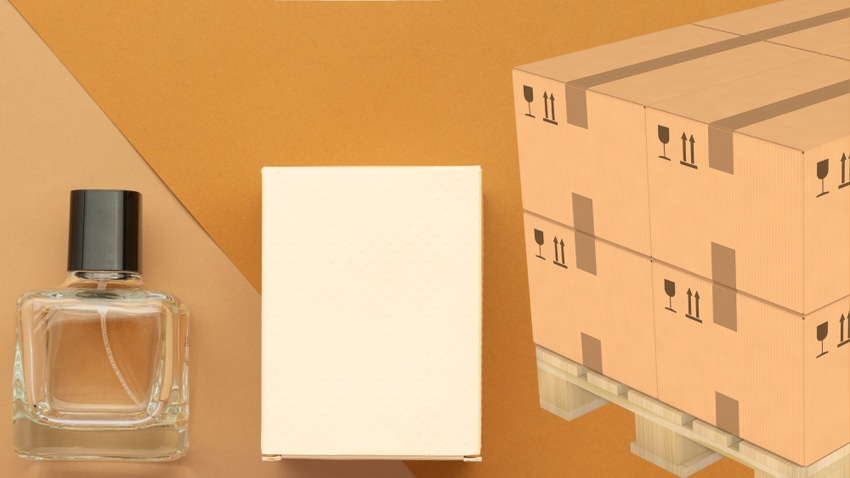3 Levels of Packaging You Should Know
Your packaging strategy is an important part of your brand and marketing strategy; and needs to consider all three levels of packaging to be effective.

At a Glance
- Each level of packaging has its own functions
- Use the different levels to communicate your brand values
As consumers, we love cool packaging. When products we love come in an unexpected, attractive, or entertaining package, it adds to the experience. As end consumers, we mostly encounter what packaging specialists call primary packaging. But that’s just one of three possible levels.
Those who work in shipping and logistics, own a business, or are in charge of ordering packaging know the three levels of packaging are called primary, secondary, and tertiary. Each of these features a different construction and serves a different purpose. Additionally, each has a different target user group.
Understanding the levels of packaging involved in their supply chain is crucial. It enables businesses to have in place a cost-effective packaging strategy that meets the end consumer’s expectations. It protects the products in transit. And it delivers on essential business requirements, such as environmental values.
Why packaging levels matter.
Packaging is an essential element of the marketing mix, especially in the case of consumer goods. Market leaders like Apple understand the importance of packaging design in branding. This is why they make it a big part of their marketing strategy.
Your packaging is how you as a business communicate your brand values, quality, and positioning of your product, appeal to your target audience, and stand out from the competition. To have consistent brand messaging, your packaging strategy needs to consider each of the three levels of packaging so they all tell the same story.
Here they are:

Canva
1. Primary Packaging.
Unlike Software as a Service (SaaS), which is intangible and virtual, like cybersecurity solutions or enterprise video communications, physical products such as consumer goods require packaging so they can reach the end consumer in the original condition.
Primary packaging, also called retail or consumer packaging, is vital here. What does it do? The main purpose of primary packaging is to protect the product from damage and elements while in transit. But it also preserves the product, especially perishables, and liquids, and makes the products easier to handle for storage or transport.
Examples of primary packaging include:
• For potato chips, the bag that holds the chips.
• For a washing machine, a corrugated box it comes in.
• For a mineral water drink, the bottle.
Primary packaging serves as an information and promotion medium. It identifies the product, communicates regulations for use and best-before dates, and carries branding that is essential for attracting consumers. Well-designed and creative primary packaging helps products stand out on the shelves, clearly communicates their purpose, and indicates their quality.
Recently, consumers have been prioritizing eco-friendly products that come in sustainable packaging. Using easily recycled or biodegradable materials in packaging can help an environmentally responsible business stand out.

Canva
2. Secondary Packaging.
Remember our bottle of water from the primary packaging example? If you need to buy a 12-pack rather than one bottle, the corrugated or paperboard tray plus shrink-wrap holding bottles together is an example of the next level of packaging: secondary packaging.
Secondary packaging is designed to hold individual products in their primary packaging together for easier storage and transportation. The main purpose of secondary packaging is to protect the products as they move through the supply chain. Cartons are commonly used as secondary packaging — like to hold a bottle of perfume. Other examples include bags, trays, plastic crates, and shrink-wrap to bundle primary packages together.
Other than protecting the products it contains, secondary packaging needs to be stackable for efficient storage and transportation. Consumer goods companies often design and brand secondary packaging, which can come in different materials, to be attractive to consumers, and retailers often use it as a display. Sustainability is another consideration, just like with primary packaging.
Interestingly, in non-FMCG (fast-moving consumer goods) industries, secondary packaging has a different meaning. For example, when you buy a mattress, it comes in protective packaging, often unbranded, called secondary packaging. Secondary packaging has to protect the mattress yet be easy enough to remove for the team delivering it to a customer’s home.

Canva
3. Tertiary Packaging.
As customers, we get an insight into tertiary packaging, also called bulk packaging, when we visit wholesale-style stores like Ikea. In these kinds of places, products are flat packed in boxes and stacked on pallets. Tertiary packaging gives the product a third layer of protection and aims to protect during transport, such as the shipping container stage.
Tertiary packaging is designed for manufacturers and warehouses, and end users rarely see it. Common examples of tertiary packaging include pallets and crates, wrap, and large shipping containers.
Packaging levels in a nutshell.
Primary packaging must protect the product and maintain its quality. As well as this, it communicates product details, branding, and any regulatory information.
Secondary packaging provides additional protection during transport. It also provides convenience to customers buying multiple items, and gives retailers display options.
Tertiary packaging has to provide stability during transit, take up minimal storage space to be efficient, and protect the products as they move throughout the supply chain.
About the Author(s)
You May Also Like




